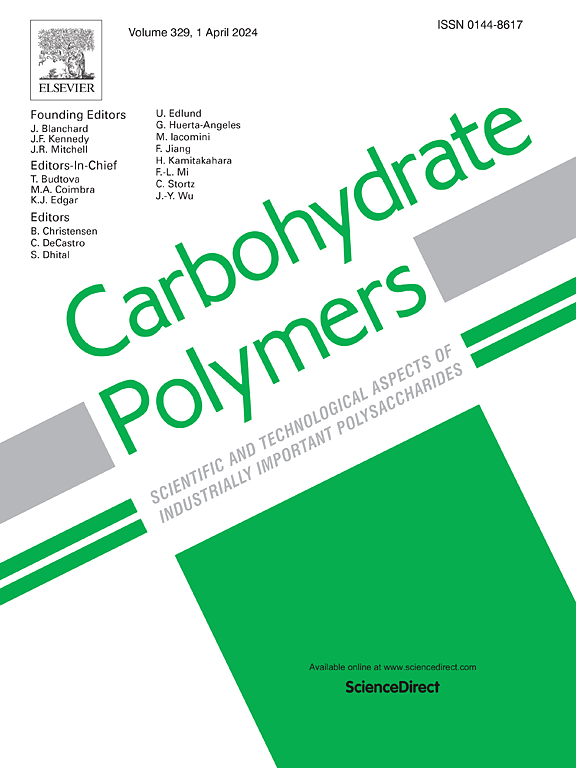A sustained H2S-releasing nanocellulose-based hydrogel with anti-inflammatory and antibacterial properties for promoting infected wound healing
IF 10.7
1区 化学
Q1 CHEMISTRY, APPLIED
引用次数: 0
Abstract
Infected wounds present unique challenges during healing, often characterized by prolonged inflammation and delayed tissue recovery. To address these issues, we developed a composite hydrogel (CAEG), which integrated a hydrogen sulfide (H2S) donor (GYY4137), carboxylated nanocellulose (CNF-C) and ε-polylysine (ε-PL). This hydrogel was designed to enhance wound healing by mitigating inflammation and preventing infections. In vitro studies demonstrated that CAEG hydrogel facilitated cell migration, angiogenesis, and macrophage polarization toward the M2 anti-inflammatory phenotype through controlled H2S release. The ε-PL component provided additional antibacterial effects via electrostatic interactions. In vivo experiments confirmed that the CAEG hydrogel effectively accelerated wound closure in full-thickness skin infected wounds. These findings highlighted the CAEG hydrogel's potential as a promising tool for treating infected wounds by leveraging its dual anti-inflammatory and antibacterial capabilities.

求助全文
约1分钟内获得全文
求助全文
来源期刊

Carbohydrate Polymers
化学-高分子科学
CiteScore
22.40
自引率
8.00%
发文量
1286
审稿时长
47 days
期刊介绍:
Carbohydrate Polymers stands as a prominent journal in the glycoscience field, dedicated to exploring and harnessing the potential of polysaccharides with applications spanning bioenergy, bioplastics, biomaterials, biorefining, chemistry, drug delivery, food, health, nanotechnology, packaging, paper, pharmaceuticals, medicine, oil recovery, textiles, tissue engineering, wood, and various aspects of glycoscience.
The journal emphasizes the central role of well-characterized carbohydrate polymers, highlighting their significance as the primary focus rather than a peripheral topic. Each paper must prominently feature at least one named carbohydrate polymer, evident in both citation and title, with a commitment to innovative research that advances scientific knowledge.
 求助内容:
求助内容: 应助结果提醒方式:
应助结果提醒方式:


